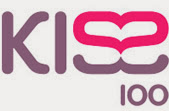Si Scott
Si Scott is one of my favourite graphic designers due to the fact that he creates handmade types (my most preferred form of design) of typography to express his views, which is a simple method that he adds great detail to with a combination of flowing patterns and fonts. He is an English graphic designer who was born in Leeds. Si Scott left school at 16 years of age and went to Leeds College Of Art and Design, where he now works as a lecturer. At the College, he studied a BTEC in Graphic Design as well as a foundation in Visual Communication which allowed him to move onto studying a degree in Graphic Design at Birminghamshire Chilterns University. When he completed his degree he stayed in London for 2-3 years where he worked for a number of clients whilst doing his own freelance projects. Over the years he has worked for a number of clients such as Universal Music, Atlantic Records, NYC & GO, Space NK, Contagious, Sony BMG, The Guardian, Nike, Cocoa Cola and Diesel.
This is one of my favourite pieces done by Si Scott. This is due to the fact that he has created an interesting piece using to simple contrasting colours. He has achieved this by adding artwork/patterns to the a phrase, which actually helps bring across the meaning of the phrase, which shows that this was a successful piece. Si Scott's work has inspired me to create a logo in the same style as this example because the patterns around the type help convey a particular mood, which also relates to the style of music my radio station is targeted at; including music by The Weeknd. The main genre that my radio station would supposedly play would be soul (which is the category that The Weeknd's music falls into), R&B and Hip Hop/Rap.
I have chosen to analyse Si Scott because I intend on incorporating his style of design with my typography for the logo I will create for my radio station; 'ease fm'. I have made this decision based on the fact that the music my station will play lies under the genre; slow jams and R&B. This style of music generally has a calm flow, putting you at ease, which is why I chose this particular word for my station. The Si Scott design I will add to it creates a visual connection between the style of music and the name, portraying a theme of tranquility. Although Si Scott incorporates alot of patterns within his typography, I will use a simple design so that the visual aspect of the logo will not take away the meaning of the actua word;'ease'. I can relate this artwork by Si Scott to my potential logo design because the design represents the word use; in this image he has incorporated alot of patterns of swirly lines going in various directions which is a symbolisation of the word; 'spreads'. In contrast to this I will draw a few lines almost as an underline for the typography which is simple and therefore relates to the word 'ease'.





